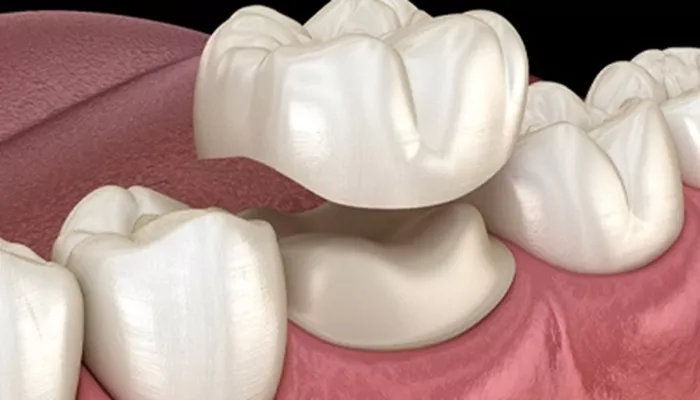Dental implants have revolutionized the field of restorative dentistry, offering a durable and aesthetically pleasing solution for missing teeth. However, the cost of dental implants can vary significantly, leaving many patients wondering which components of the procedure contribute most to the overall expense. In this comprehensive article, we will explore the various aspects of dental implant costs, with a specific focus on identifying the most expensive part of a dental implant.
What Is Dental Implants?
Before diving into the costs associated with dental implants, it’s essential to understand what they are and how they work. A dental implant is a sophisticated dental device designed to replace a missing tooth. It consists of three main components:
The Implant Fixture: This is the metal post, typically made of titanium, that is surgically placed into the jawbone. It acts as the artificial root for the new tooth.
The Abutment: This is a connector piece that attaches to the implant fixture and protrudes through the gum to support the dental crown.
The Dental Crown: This is the visible part of the implant that resembles a natural tooth and is custom-made to match the surrounding teeth.
Breakdown of Dental Implant Costs
1. The Implant Fixture
The implant fixture is often one of the more costly components of the dental implant. It is crafted from high-quality titanium or other biocompatible materials to ensure it integrates well with the jawbone and provides long-term stability.
Cost Factors:
Material Quality: High-grade titanium and advanced materials are more expensive but offer superior durability and biocompatibility.
Manufacturing Technology: Cutting-edge technologies and precision in manufacturing add to the cost.
Brand Reputation: Established brands with a track record of reliability may charge more for their implants.
The cost of the implant fixture itself can range from $1,000 to $3,000 or more, depending on these factors.
SEE ALSO: What Are Dental Implant Posts Made Of?
2. The Abutment
The abutment is a crucial component that bridges the gap between the implant fixture and the dental crown. While it may seem like a small piece, its design and material are vital for the success of the implant.
Cost Factors:
Material: Abutments can be made from titanium, zirconia, or other materials, each with varying costs.
Customization: Custom abutments designed to fit specific implant fixtures or align with the patient’s anatomy can be more expensive.
Laboratory Fees: The cost of fabricating a precise abutment adds to the expense.
Abutments generally cost between $300 and $600, but custom solutions can push this number higher.
3. The Dental Crown
The dental crown is the part of the implant that is most visible and is crafted to blend seamlessly with the surrounding teeth. This component not only affects the aesthetic outcome but also plays a role in the function of the implant.
Cost Factors:
Material: Crowns can be made from various materials such as porcelain, ceramic, or metal. Porcelain and ceramic crowns, while more natural-looking, tend to be more expensive.
Laboratory Work: The craftsmanship involved in creating a high-quality, custom crown adds to the cost.
Complexity: Crowns that require more intricate work or customization will cost more.
A dental crown can cost between $1,000 and $2,500, depending on the material and complexity.
Other Factors Influencing Overall Cost
1. Pre-Surgical Assessments
Before the actual implant procedure, patients often require several assessments, including X-rays, CT scans, and comprehensive dental exams. These diagnostic tools are essential for planning the implant procedure accurately but add to the overall cost.
2. Surgical Procedure
The surgical placement of the implant involves specialized skills and equipment. The fees for the surgery itself, including anesthesia and the time required, contribute significantly to the overall cost.
3. Follow-Up Visits and Aftercare
Post-surgical care and follow-up visits are crucial for ensuring the implant integrates successfully with the jawbone. These visits, along with any necessary adjustments or repairs, can add to the total cost of the implant process.
4. Location and Practice
The geographic location and the dental practice’s prestige can also influence the cost. Implants in metropolitan areas or practices with a high level of specialization may be more expensive.
The Most Expensive Component
While each part of the dental implant contributes to the overall cost, the dental crown is often the most expensive component. The reasons for this are multi-faceted:
Material Costs: High-quality materials used in dental crowns, such as advanced ceramics or porcelain, can be quite expensive.
Laboratory Work: Crafting a custom crown requires skilled labor and advanced technology, which drives up the cost.
Aesthetic Demands: The need for a crown that matches the appearance of natural teeth requires meticulous attention to detail, further increasing the cost.
The dental crown’s role in ensuring both the functionality and aesthetics of the implant makes it a critical and costly component of the overall implant procedure.
Conclusion
Dental implants are a significant investment in oral health, and understanding the cost breakdown can help patients make informed decisions. While various components contribute to the expense, the dental crown often stands out as the most costly part of the implant system. Its high material quality, specialized fabrication, and aesthetic demands all play a role in its higher price point.
By understanding the costs associated with each component, patients can better appreciate the value of their investment and the importance of choosing high-quality materials and skilled professionals for their dental implants. Whether considering implants for cosmetic reasons or functional restoration, knowing what drives the cost can lead to more informed and satisfactory decisions.

